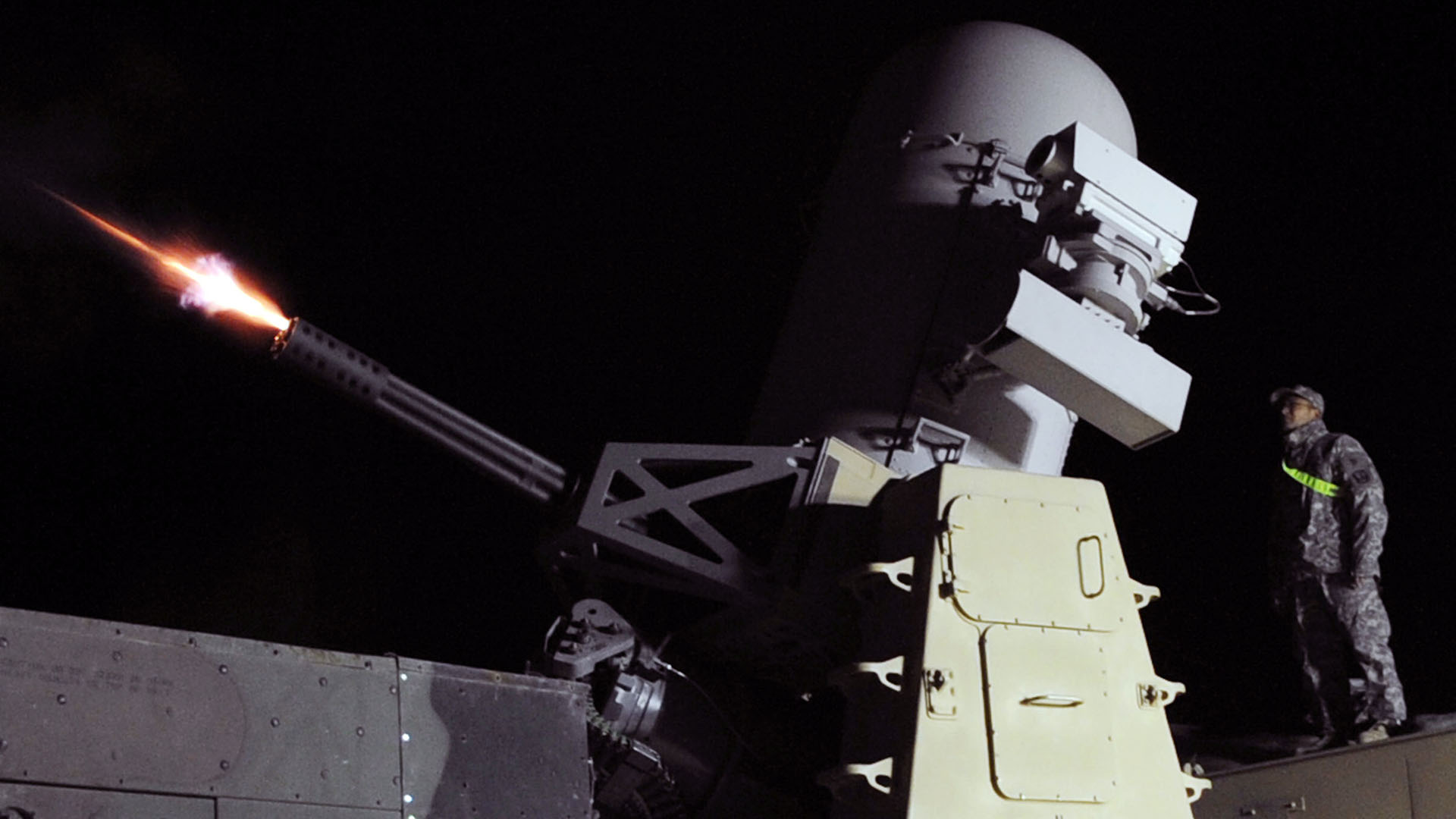

More than 20 U.S. troops have been injured since Iranian-backed groups began a series of drone and rocket attacks on American forces in Iraq and Syria starting on Oct. 7, a defense official confirmed on Wednesday. The Pentagon has announced that U.S. troops have been the subject of 13 attacks recently.
A total of 21 U.S. troops received minor injuries between Oct. 17 and 18 in separate attacks against the Al Tanf garrison in Syria and Al Asad Air Base in Iraq, said Air Force Brig. Gen. Pat Ryder, a Pentagon spokesman.
“All members returned to duty,” Ryder said in a statement on Wednesday. “It is important to note, in some cases service members may report injuries such as TBI (Traumatic Brain Injury) several days after attacks occur, so numbers may change.”
NBC News reported on Tuesday that 24 U.S. troops had been injured in two separate drone attacks on Oct. 18. Twenty American service members at the Al Tanf garrison in Syria were injured by one attack, and four other U.S. troops were injured in a separate attack that day on Al Asad Air Base in Iraq.
Between Oct. 17 and Oct. 24, U.S. troops in Iraq and Syria came under drone and rocket attack a total of 13 times, Ryder told reporters on Tuesday.
Ten of those attacks took place in Iraq and the remaining three occurred in Syria, Ryder said during a Pentagon news briefing.
Subscribe to Task & Purpose Today. Get the latest military news and culture in your inbox daily.
“If there is a response, should we choose to have one, we would do that at a time and place of our choosing,” Ryder said.
The groups conducting the attacks are linked to Iran’s Islamic Revolutionary Guard Corps and the Iranian regime, Ryder.. He did not name any of those groups believed to have carried out the attacks.
“I’m not going to go into specifics here from the podium, other than to say that we know that these groups are Iranian proxy groups,” Ryder said.
The drone and rocket attacks against American forces began after Hamas launched its Oct. 7 terror attack on Israel. The United States has given Israel its full support and is providing the Israelis with weapons systems.
U.S. government officials have warned that Iran is trying to widen the conflict between Israel and Hamas by attacking American forces in the Middle East.
“I think it’s fair to say when you see this uptick in activity and attacks by many of these groups, there’s Iranian fingerprints all over it,” a senior defense official told reporters on Monday.
The United States “will hold Iran accountable” for attacks conducted by its proxies on U.S. troops, said the senior defense official, who spoke on condition of anonymity under rules established by the Pentagon.
The recent news that 24 US troops in Iraq and Syria have been injured from attacks blamed on Iranian-backed groups is reminiscent of the last time the United States and Iran were on the brink of war.
Following the Jan. 2, 2020 U.S. airstrike that killed Iranian Maj. Gen. Qasem Soleimani, the former head of the Islamic Revolutionary Guard Corps’ elite Quds Force, Iran launched ballistic missiles at U.S. troops deployed to Iraq.
Eleven of those struck Al Asad Air Base. Although then-President Donald Trump initially said the United States had not suffered any casualties from the attack, a total of 110 American service members at Al Asad were later diagnosed with mild Traumatic Brain Injury. Out of those troops, 29 soldiers received the Purple Heart.
Since the Oct. 7 terror attack, Hamas has fired more than 7,000 rockets toward Israel, according to the Israel Defense Forces. Now the Defense Department plans provide Israel with two Iron Done missile defense systems that had been purchased by the U.S. Army, a defense official confirmed.
To protect U.S. troops in the Middle East, the Pentagon is deploying a Terminal High Altitude Area Defense, or THAAD battery to the region along with Patriot missile battalions from Fort Liberty North Carolina, and Fort Sill, Oklahoma, Ryder said on Tuesday.
Additionally, the Defense Department has placed troops on heightened alert in case they are needed in the Middle East. As of Tuesday, none of those service members had deployed, Ryder said.
“It is our aim to avoid any regional expansion of Israel’s conflict with Hamas,” Ryder said. “But we stand ready and prepared to protect our partners and our interests and will act to do so.”
UPDATE: 10/25/2023; this story was updated with a statement from Air Force Brig. Gen. Pat Ryder that 21 U.S. troops in Iraq and Syria have been injured by drone attacks.
The latest on Task & Purpose
- A guide to every beret worn by American service members
- Army general says moldy barracks are a ‘discipline problem’
- Best of the bad: What was the best C-ration during the Vietnam War?
- How rank and rate works in the Navy
- $1.3 billion in Army spare parts found in ‘critical’ shape, IG reports
